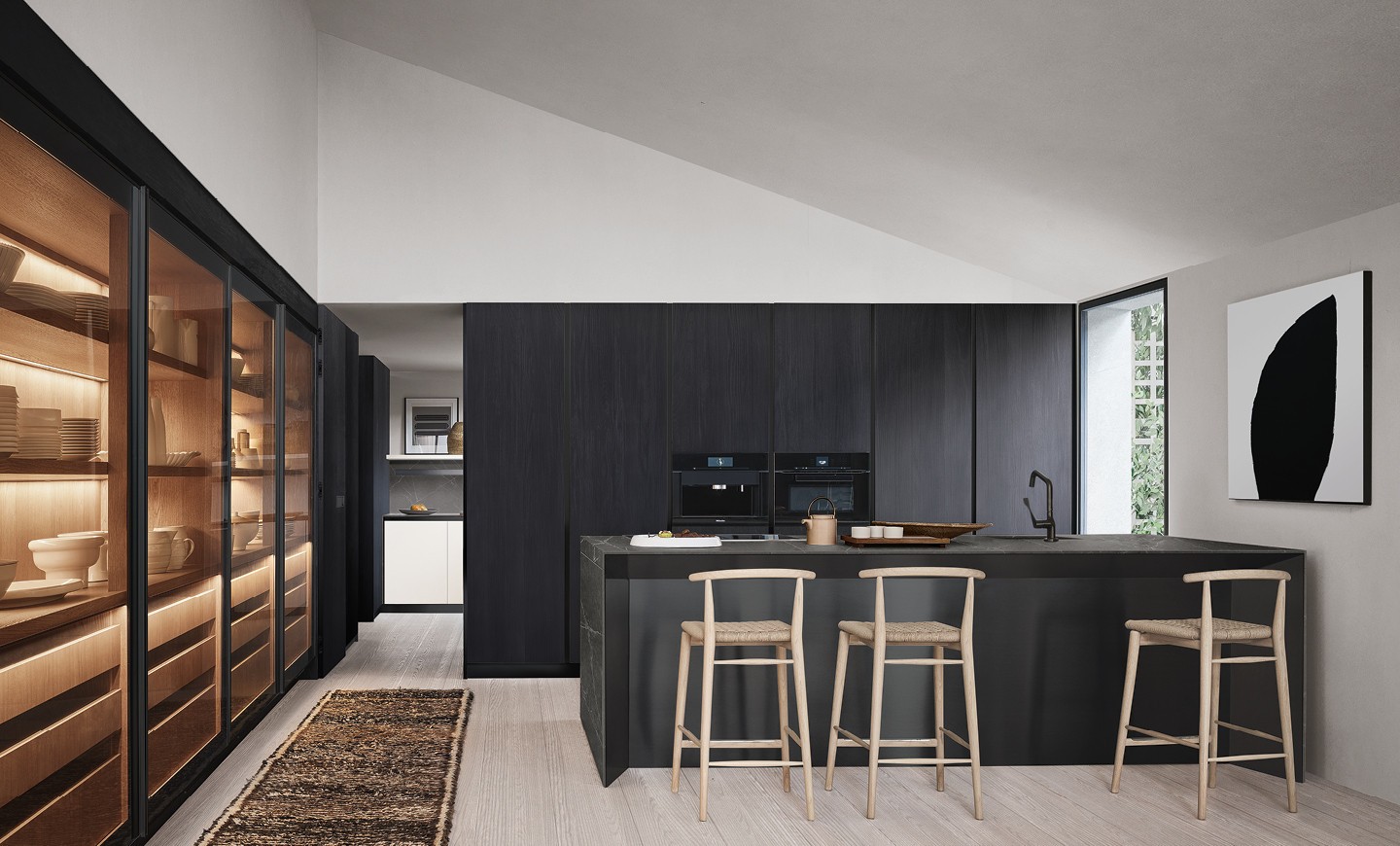The kitchen is perhaps the environment that reflects most of all our way of living, and evolutes consequently over time. Well aware of this importance, Arclinea does not limit itself to producing furniture and equipment, but develops real spaces in which technical precision must go hand in hand with functionality.
To do this, the company founded in 1925 has relied on architect and designer Antonio Citterio for almost 35 years, who, project after project, has been able to reinterpret the conceptual idea of the kitchen, without ever neglecting its relationship with the surrounding context, essential for ensure that the environment knows how to "dialogue" with the different eras and with changing ways of living, thus managing to last over the years.Within this concept, the constant search for complexity is highlighted by those components that are not reduced to minor details, as is the case with the materials, which in Arclinea kitchens become real protagonists of the products. This is why the choice of using stainless steel, as in the Italia project, or opting for wood or laminates, always responds to a specific need, inevitably linked to the type of kitchen that expected to shape.
NATURAL COLORS IN HARMONY WITH THE KITCHEN
It was 1958 when Arclinea launched THEA, the first modular kitchen made entirely of natural wood, on the market. Since that time, the company has never stopped its efforts to try to bring nature into the kitchen in the most harmonious way possible, that is, through its materials and especially its colors.
The main witnesses of this philosophy today are the countless finishes designed to emphasize the naturalness of the material. These also include PVD (Physical Vapor Deposition), a technology that uses the melting of titanium molecules to give steel, a material typically synonymous with durability and resistance, an unique warmth through colors that allow it to blend harmoniously with woods and natural stones, making the environment even more welcoming.
It is no by chance that the showroom recently opened by Arclinea in China, in one of the most privileged locations in Shenzhen, is inspired by nature, evident both in the clean lines and in the numerous natural elements and materials, which through their own nuances allow visitors to immerse themselves in a relaxing space.
ARCLINEA COLLECTION CATALOGS: DISCOVER ALL
What makes the entire Arclinea Collection special is the fact that for many years the company has placed transversality at the center of its projects, made up of elements that can be combined in dynamic ways, according to the needs and tastes.
It is a philosophy born and grown through collaboration with Antonio Citterio, the architect and designer who has been developing kitchens for more than 30 years in which "each designed element can be transferred to different models", as he himself declared.
Therefore, projects become open systems and predisposed to evolution, with individual elements that, just like software, are able to update and renew themselves over time, based on the context with which they relate.
The most striking example of this way of operating comes from the Italia model, presented in 1988 as the first product of the relationship between Arclinea and Citterio, who would later become the art director and designer of the entire collection.
Italia is still in production today precisely because, after anticipating the trend to make the kitchen more and more professional, for example through the use of steel and the presence of larger surfaces, it has been able to keep up with the times thanks to the addition over the years of more efficient equipment, renewed technical details and even more refined finishes.
The principle of constant updating is also evident in Gamma, a kitchen project born in 2013 and inspired by Gamma 30, the historic product of Arclinea from 1970. Despite its roots, clearly linked to the past, today Gamma is a transversal program capable of communicating and integrating with any other product of the Arclinea Collection.
Among the stages in the evolution of the way of understanding the kitchen, Convivium stands out, a project that came out in 2002 to give a new core to this environment, with a large table integrated into the island that acts as a meeting point for people who are already during food preparation, and Lignum et Lapis, which since 2008 has taken the idea of convivial cooking to a new level, using stone and wood to shape a space where it is easier to share not only the pleasure of food with guests , but also that given by the act of cooking.







